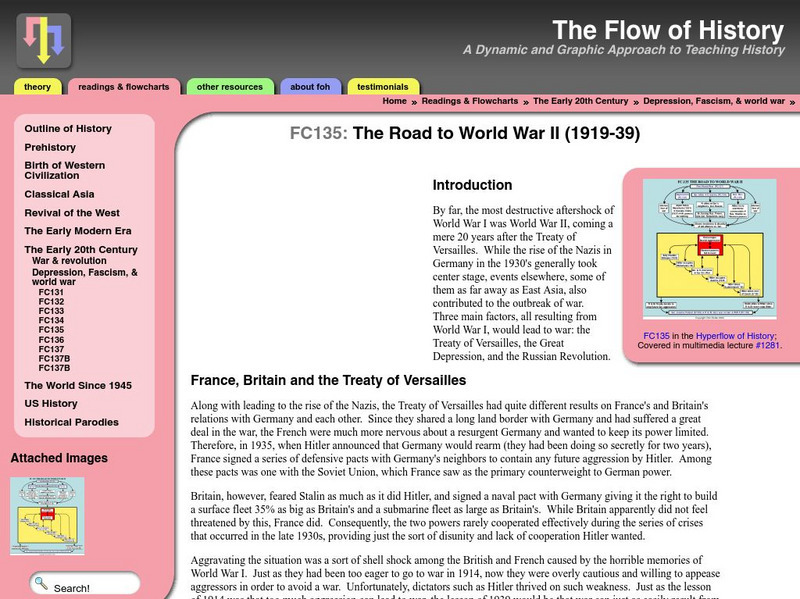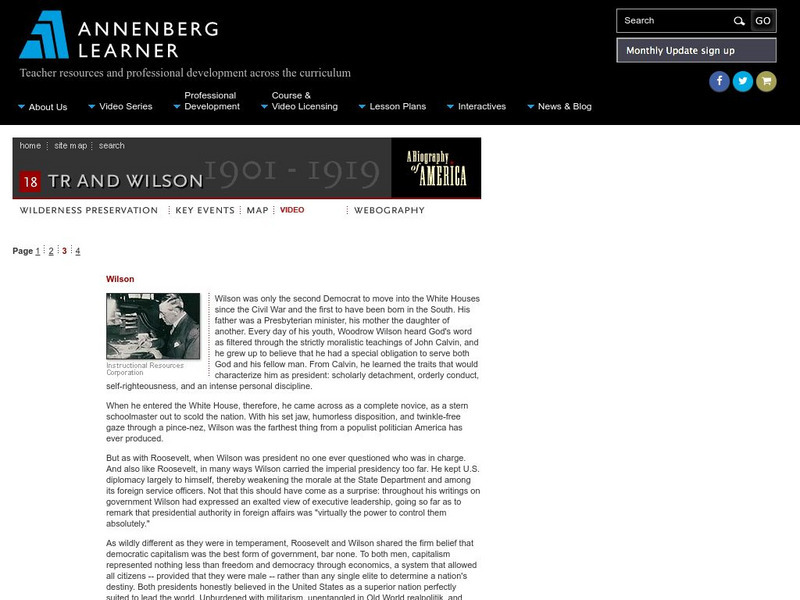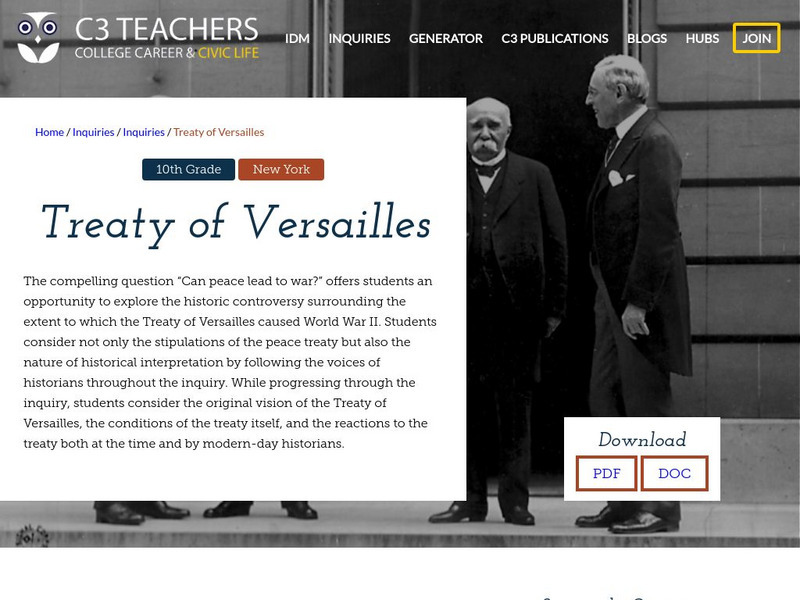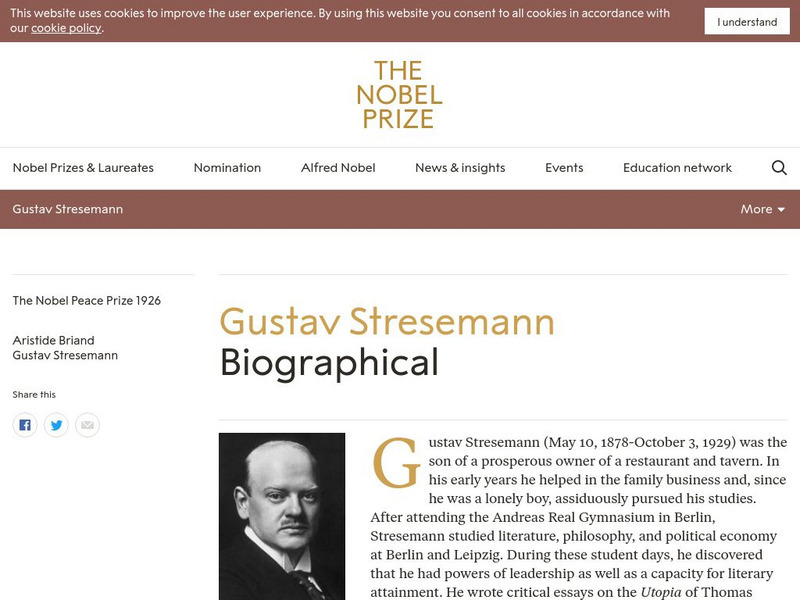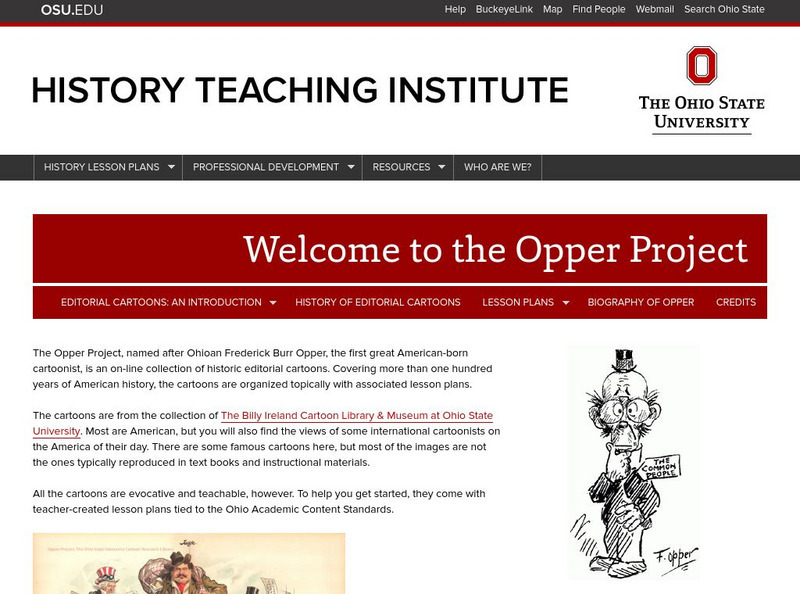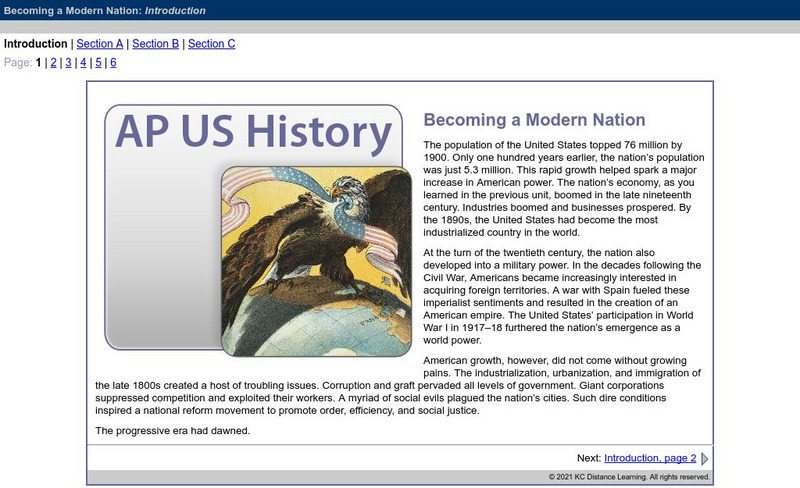Digital History
Digital History: Munich: Anatomy of a Crisis [Pdf]
This excellent lesson plan lays out the framework of the lead-up to World War II in Europe. It covers the problem the support of Czechoslovakia caused Great Britain and France, the policy of appeasement exercised by Prime Minister...
Georgia Department of Education
Ga Virtual Learning: World History: The Years Between the Wars (1919 1939)
World History unit on the years between the two world wars, 1919-1939. Comprehensive multi-media resources, assignments, activities and assessment.
Flow of History
Flow of History: The Road to World War Two (1939 45)
Teacher-created site that examines the flow of events that led to the outbreak of World War II.
Other
New American Nation: Internationalism and Interwar Isolationism
This essay by two foreign policy scholars gives background to the concept that the United States did not really become isolationist after World War I.
Digital History
Digital History: Isolationists, Internationalists and Lend Lease [Pdf]
Read about the German incursion into France and the Low Countries and the bombing of Great Britain which caused much discussion in the United States. Should the US stay out of affairs in Europe, or intervene to help their long-time ally,...
Annenberg Foundation
Annenberg Learner: A Biography of America: Woodrow Wilson
Discover what made Woodrow Wilson a powerful president in this biographical account.
OpenStax
Open Stax: Americans and the Great War 1914 1919: From War to Peace
Examines how the United States contributed during the final stages of World War I, what Woodrow Wilson believed the world should look like after the war, and why the United States did not sign the Treaty of Versailles or join the League...
C3 Teachers
C3 Teachers: Inquiries: Treaty of Versailles
A comprehensive learning module on the Treaty of Versailles that includes three supporting questions accompanied by formative tasks and source materials, followed by a summative performance task. The unit examines whether or not the...
Nobel Media AB
The Nobel Prize: Gustav Stresemann Biographical
Read about Gustav Stresemann, the German who shared the 1926 Nobel Peace Prize with Aristeide Briand. This biography includes a portrait as well as several resources in the "Selected Bibliography" for further reading and research.
Ohio State University
Opper Project: Using Editorial Cartoons to Teach History (Lesson Plans)
Two dozen lessons that focus on using political cartoons as primary source resources for teaching American history. Lessons cover a range of topics in U.S. history from the Civil War era forward and are linked to Ohio content standards.
Ohio State University
Opper Project: Using Editorial Cartoons to Teach History (Lesson Plans)
Two dozen lessons that focus on using political cartoons as primary source resources for teaching American history. Lessons cover a range of topics in U.S. history from the Civil War era forward and are linked to Ohio content standards.
Department of Defense
Do Dea: Ap Us History: Unit 6: Becoming a Modern Nation
This extensive learning module examines the role of large-scale industrialization, urbanization, and mass migrations in creating new demands on government and social organizations to design reforms, and looks at the global and domestic...
Brigham Young University
Byu: Wwi Document Archive: Peace Treaty of Versailles
This site contains the text of the covenant of the League of Nations from the Peace Treaty of Versailles.
Digital History
Digital History: Woodrow Wilson and the League of Nations [Pdf]
President Woodrow Wilson had great hopes that a League of Nations would mean that there would be no more world wars. Read about the charter for the League of Nations, especially Article X, which provided the teeth for the organization....
Digital History
Digital History: The Fourteen Points and the Versailles Treaty [Pdf]
President Woodrow Wilson, in his hope that World War I was the war to end all wars, issued his Fourteen Points almost one year before the end of the war as a bluepoint to guarantee peace across the world. Read a summary of the points and...
Digital History
Digital History: The Rise of the Dictators [Pdf]
Use this lesson plan to explore the economic and political conditions in Europe after World War I as a result of the Treaty of Versailles that led to the rise of dictators in several countries. Read about the rise of Lenin and Stalin in...
University of Groningen
American History: Outlines: The League of Nations
Overivew of the end of World War I, the Treaty of Versailles and the League of Nations.
National Endowment for the Humanities
Neh: Edsit Ement: The Great War: Evaluating the Treaty of Versailles
In this lesson plan, students will consider "The Great War: Evaluating the Treaty of Versailles." The plan includes worksheets and other student materials that can be found under the resource tab.
PBS
Pbs Teachers: The Great War (World War I Lesson Plans)
Eight lesson plans for exploring aspects of World War I, also known as the Great War, with instructions for introducing middle-school learners to the causes of the conflict; to the great symbol of the war's stalemate--the trenches; to...
US National Archives
Nara: Military Resources World War I
A compilation of resources on World War I from the National Archives and Records Administration, including links to external sites.
University of South Florida
University of South Florida: The Nazification of Germany
This site from the University of South Florida discusses the transformation of Germany under Hitler. Includes photos, movie clips, web links, lesson plans, time lines, vocabulary, and bibliograhy.
The History Place
The History Place: The Rise of Adolf Hitler: War Ends With German Defeat
Describes events at the end of World War I after Armistice, the new German Republic, problems with battle-hardened soldiers, the Treaty of Versailles, Hitler's experiences as an undercover agent in the army weeding out Marxist...
PBS
Pbs: The Great War: Interactive Timeline
This site has an interactive timeline of World War I. Choose a year to see important events listed chronologically. You can click on battles and names of famous people to read accompanying thoughts of historians.


![Digital History: Munich: Anatomy of a Crisis [Pdf] Website Digital History: Munich: Anatomy of a Crisis [Pdf] Website](https://d15y2dacu3jp90.cloudfront.net/images/attachment_defaults/resource/large/FPO-knovation.png)

